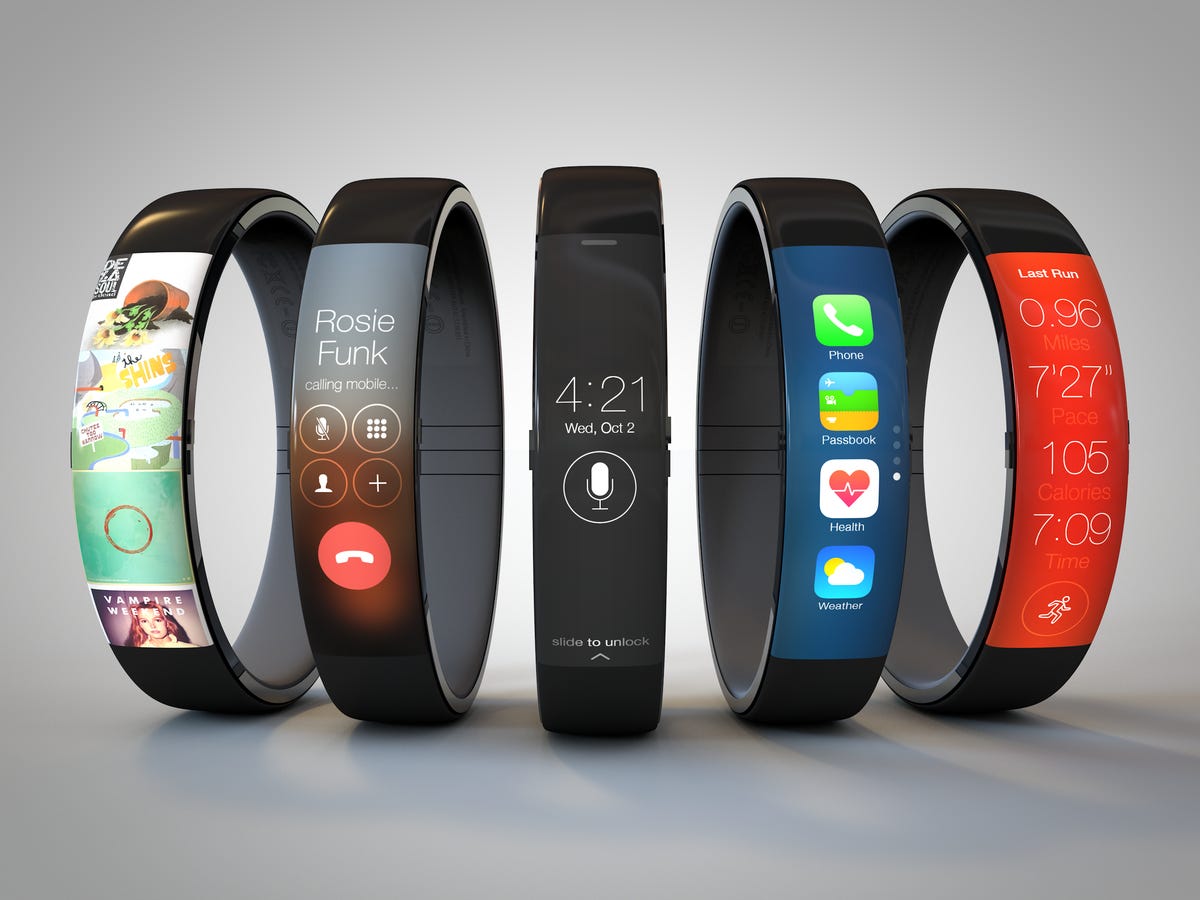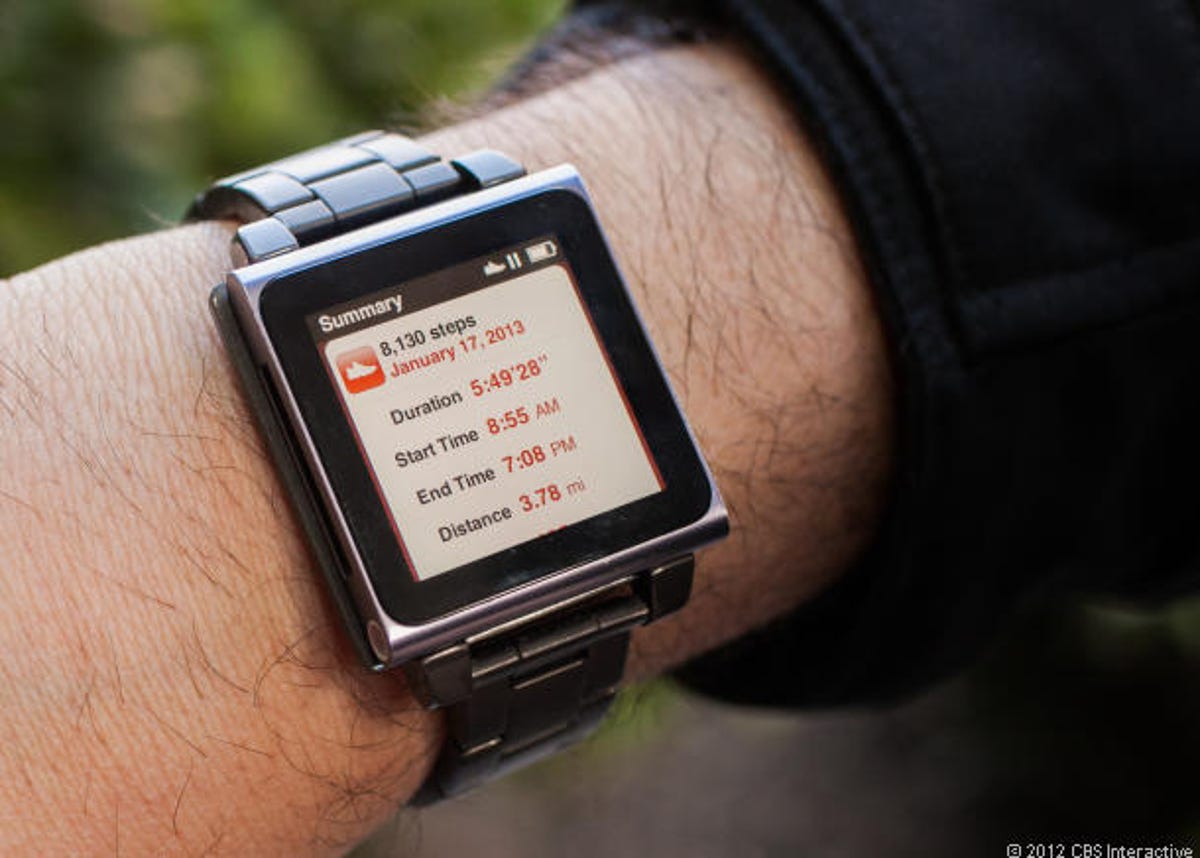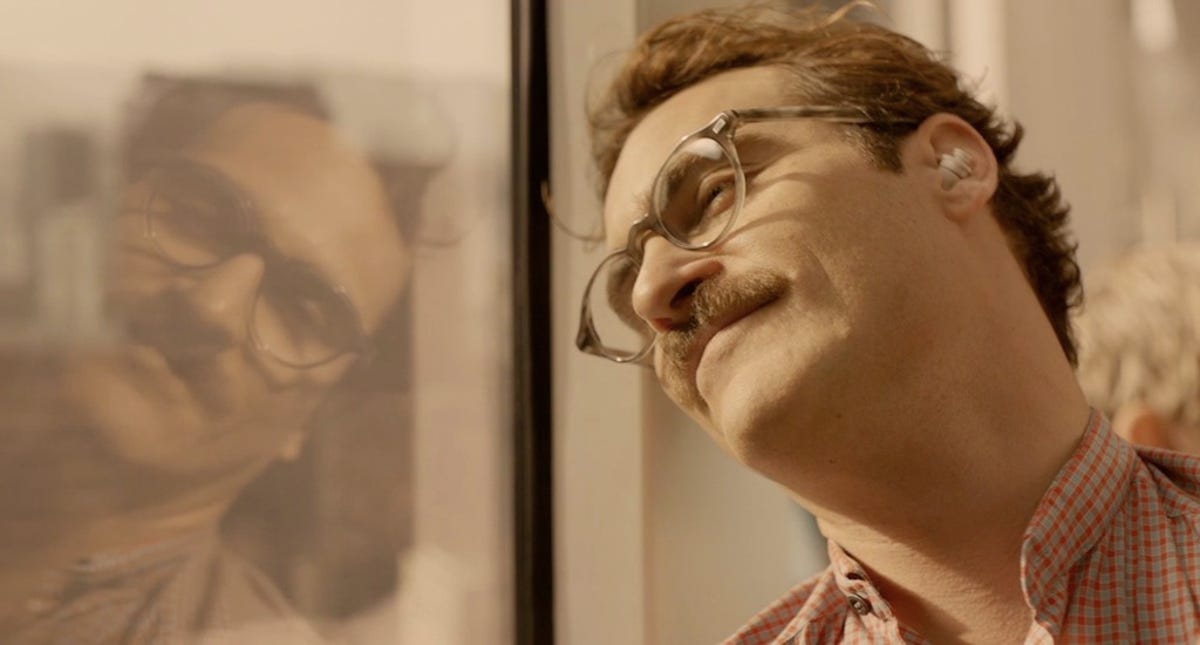
Todd Hamilton
If the rumors are true, Apple may unveil a wearable device along with its new iPhone at an event on Sept. 9.
But will that wearable be the long-rumored “iWatch,” a wrist-based smartwatch built off Apple’s iOS mobile operating system that aims to take on challengers from Google, LG, Motorola and Samsung? If it isn’t the iWatch, just what will Apple CEO Tim Cook and his team introduce in the wearables market?
Apple’s Sept. 9 event: Complete coverage
- iPhone 6: Every rumor about the specs, release date, and size of Apple’s next smartphone
- iPhone 6: Sorting through fact and fiction around Apple’s upcoming smartphone
- What I want to see in the iPhone 6
- Apple iWatch: Rounding up every rumor surrounding Apple’s supposed smartwatch
- Apple co-founder Woz calls wearables ‘a hard sell,’ wants bigger screen
Recode reported Wednesday that Apple’s first wearable might make debut with the iPhone 6 — rather than at a product event expected in October. But Recode carefully avoided calling the wearable the iWatch and didn’t make any mention of a smartwatch. That suggests Apple’s wearable plans may still be too cryptic to decipher.
So will it be a smartwatch or a fitness band, especially given the favorable and widely circulated mock-ups from designers like Todd Hamilton? Or will it be a device unlike any we’ve never seen before. Whatever it is, Apple, which hasn’t introduced a product in a new category since the iPad tablet in 2010, needs to impress.
“Apple has kind of lost its mojo,” says James McQuivey, an analyst with Forrester Research. “But, Apple is a unique company, it’s capable of making that kind of radical social change, not only possible, but desirable. And that’s how it will get its mojo back.”
But figuring out how to get people, now accustomed to carrying around a smartphone, to buy into a new mobile device can be a challenge. Samsung, which has led the charge by releasing more than half a dozen wearables in the last two years, has tried everything from round and square watches, to color LCD-equipped wristbands, to a headset that drapes around your neck. Other device makers like LG and Motorola have stuck to wrist-worn time pieces, for now.
Even Apple co-founder Steve “Woz” Wozniak said this week that wearables may be “a hard sell,” though he thinks if anyone can convince consumers to covet a wearable, it’s Apple. “Apple works very hard to produce exceptionally great products and doesn’t quickly release things like a wearable,” Woz told CNET News. “So if one is introduced I expect it to have a chance to set the direction and make the product category finally viable.”
Apple doesn’t comment on rumors or speculation and hasn’t ever acknowledged it’s working on wearable development — though CEO Tim Cook has been promising since last year and said at a May 2013 conference that the wearables market is “ripe for exploration.” “I think from a mainstream point of view [glasses as wearable computing devices] are difficult to see,” he said. “I think the wrist is interesting. The wrist is natural.”
If Cook doesn’t unveil a smartwatch in September, company watchers say there are at least four other ways Apple can get into the wearables game.
1. A plain ol’ fitness tracker
Fitness and health will undoubtedly play a role in whatever wearable Apple delivers.
Fitness trackers, like Fitbit’s Flex, Jawbone’s Up, and Nike’s Fuelband, have had the best track record for wearables among consumers, capturing the lion’s share of the market, according to the NPD Group. So it makes sense that Apple may want to ease its loyal fans into a wearable that’s easy to use and serves a specific purpose. Healthkit, Apple’s platform for tracking users’ health data, would likely come into play here along with Apple’s new HomeKit platform for connected home devices like thermostats and smart locks.
When CNET reported that Nike abandoned its popular Nike Fuelband wearable fitness tracker, there was speculation the sportsmaker was making room on the market for an Apple device. The two companies have had a close relationship; Cook has served on Nike’s board since 2005. When Nike CEO Mark Parker was pressed for details on an Apple wearable partnership, the executive dropped telling hints. “I will say that the relationship between Nike and Apple will continue,” Parker said. “And I am personally, as we all are at Nike, very excited about what’s to come.”
That said, Apple is arriving late to the party and a standalone fitness tracker would be a letdown unless the company can produce something with more functionality than what’s already on the market. That may mean something more in line with what Hamilton designed, meaning a fitness band, yet one with cellular connectivity separate from a smartphone and a color screen. “If Apple comes out with a Fitbit copy, that’s going to be extremely disappointing,” NPD analyst Weston Henderek said.
2. iPod Nano refresh
Apple’s 2010 iPod Nano had a 1.5-inch multi-touch display and a clip on its back that allowed it to snap onto a shirt collar or belt loop. Yet after some DIY bracelet attachments and more polished Nano cases designed for the wrist came to the market, Apple got the hint: the Nano could double as an early smartwatch. Apple updated the Nano firmware to support watchfaces, yet the device always remained a kind of geek fashion symbol, a far cry from the stylish and powerful smartwatches of 2014.


Sarah Tew/CNET
Fast forward four years and the iPod line has been pushed to the periphery, with iPod shipments dropping 36 percent year over year in the quarter ending in June, with sales dropping 40 percent. The Nano now looks like a mini iPod Touch, running a stripped down version of the iOS software and supporting fitness and music.
A comeback for the dedicated MP3 player is unlikely any time soon — unless Apple’s wearable is branded under the iPod line.
Whether an iPod-branded wearable would resemble the 2010 Nano and contain a clip for wrists, shirt collars, and belt loops depends on how Apple wants consumers to use it. A multi-purpose wearable may be easier to use, yet a dedicated smartwatch would strike the most compelling and sought-after market in the space. Either way, the iPod line is in need of a refresh — if Apple wants to keep it alive — and a wearable could do the trick.
3. Siri-connected headset or ear buds
The 2013 movie “Her,” directed by Spike Jonze, envisioned Los Angeles in a near-future with smartphones that really haven’t undergone any radical visual changes. Instead, the film imagines that the software and hardware that powers our devices has advanced to the point of ubiquity, where the technology becomes a seamless part of our daily life.
The protagonist Theo Twombly perpetually wears an earbud connected to an artificial intelligence program that interacts with him through the camera on his phone. Over time, Theo falls in love with her, the AI operating system that plays him music, organizes his calendar, and asks him what it’s like to be human. Apple very well could go the route of “Her”-style earbuds or perhaps a headset wearable — think a Glass-less Google Glass — connected to its virtual personal assistant Siri.


Warner Bros. Pictures
“Rather than trying to compete with Google Glass, which has not captured the imagination of the public, put a speaker next to your ear,” says Forrester’s McQuivey. “Have Siri whisper in your ear.”
The digital assistant would have to do more than let people access apps — maybe work off of contextual clues that serve relevant information designed for quick consumption, as Google’s Android Wear operating system does now for smartwatches like the Motorola Moto 360. McQuivey also envisions a headset a with sensors for sensing body rhythms and heartbeats to anticipate a consumer’s needs.
Apple purchased the headphone maker Beats in February for $3 billion, bringing in music industry veterans Dr. Dre and Jimmy Iovine. With one of the most popular earpiece companies under its wing, Apple could develop a screen-less wearable that sits in our ear at all times. Of course, the technological challenges there are vast — “Her” was a blend of Sci-fi and romantic comedy after all.
4. Smart jewelry
Several small companies have already started selling jewelry that connects to a smartphone in the hopes of proving consumers want more than just a connected watch. This includes rings, necklaces and bracelets.
Major tech players are already invested in courting the fashion conscious by attending Fashion Week — including Google, which partnered with a major brands to market and sell Glass, and Samsung, which teamed with a designer to create glam Galaxy Gear accessories.
Jewelry could be that next step.


Ringly
Apple is definitely a fashion-focused company, so it’s not too much of a leap to see it develop a smart bauble.
Apple made its commitment to fashion clear this year by hiring Burberry’s CEO to head its retail efforts, and by snatching up Beats. While not a traditional fashion company, Beats headphones have become a fashion statement thanks to design and their popularity with celebrities.
Another reason to think Apple is thinking about bling: reports earlier this year that the company expanded its trademark coverage to include clocks, watches and jewelry.



